Have you ever dreamed of visiting a Thai floating market? An elderly Thai lady wearing a conical hat dips her paddle into the water as I fire off an exposure of a vendor arranging an assortment of fruit at her individual stall. As a passenger on this small vessel making its way down a canal, I’m surrounded by colorful displays of goods and inundated by exotic smells at this Thai floating market.
Visiting markets (especially floating ones) is one of my favorite travel activities; however, the scene I tried to convey above is far from the truth. What I failed to mention is that the boat I’m on is packed with other foreigners (Thai: farang) with a plethora of other vessels – both behind and in front of us – transporting even more tourists.
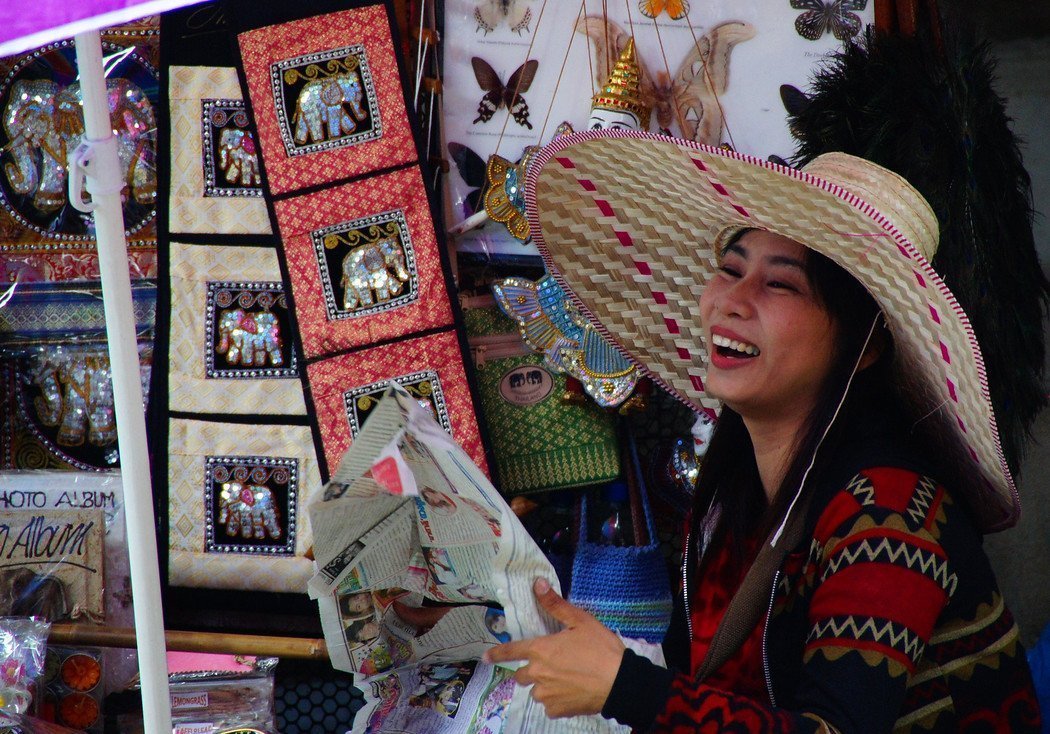
As a travel photographer, this is a treasure trove of an opportunity to take candid portraits while capturing all of the colorful exotic displays and bustle of this Thai floating market; however, as I’ve pointed out in a previous article, impressive travel photos don’t always have an equally impressive story behind them.
Unlike local markets, where vendors hardly notice the presence of a foreigner, I’m constantly being badgered to purchase something: “By from meeeee. Fried Bananaaaaa! Coconut here!!!!”
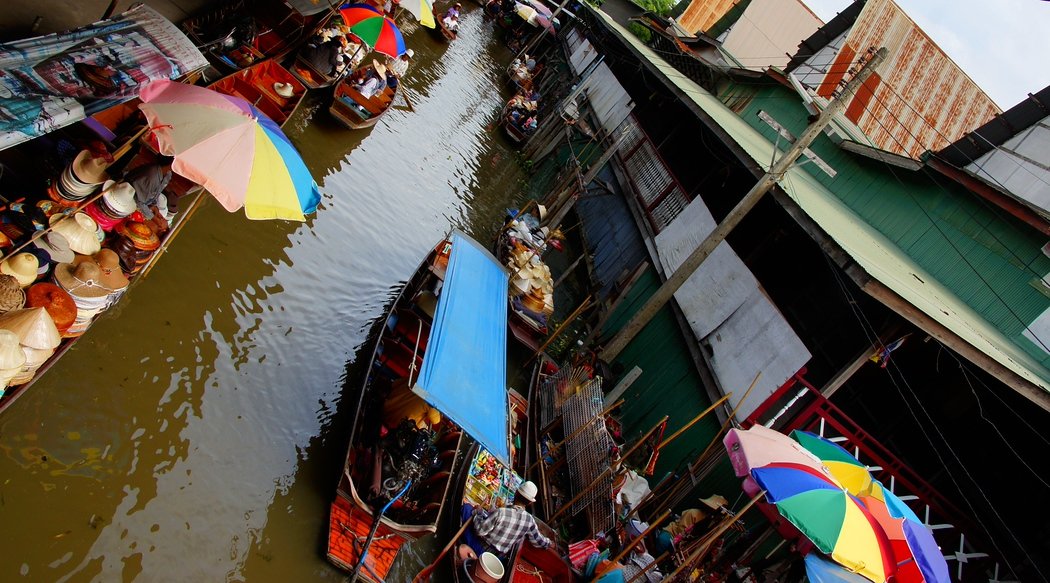
Conflicted by the reality of the situation, I can allow myself to feel entirely jaded by the experience or just go with the flow; I decide on the latter and continue pressing down on my shutter release as I wander around the floating market.
As a now popular tourist attraction, Damnoensaduak floating market was originally the name of a canal dug by military personnel during the reign of Thai King Rama IV. Rivers and canals, at the time were the lifeblood of transportation and goods; however, the now crowded market caters mostly towards tourists.

Overview of Thailand’s Floating Markets
Thailand’s floating markets are a tapestry of culture, commerce, and tradition. For centuries, they’ve been integral to Thai life. They’ve serving as hubs where communities gather along the waterways to trade goods and stories. Imagine narrow canals teeming with wooden boats, each brimming with colorful fruits, fragrant spices, and sizzling street food. Vendors paddle gracefully, calling out their wares to shoppers on the banks and in other boats. This isn’t merely shopping. It’s a way of life that has thrived for generations. Visiting these markets offers a unique experience compared to traditional markets. It allows you to witness firsthand the enduring importance of rivers and canals in Thai culture and economy.
- Cultural Significance: Floating markets preserve traditional Thai lifestyles centered around waterways.
- Economic Vitality: They support local economies by promoting regional products and small-scale vendors.
- Authentic Interaction: Engage directly with local sellers and experience genuine Thai hospitality.
Tip: Arrive early in the morning to enjoy the market at its liveliest and avoid the midday crowds.

Introduction to Damnoen Saduak Floating Market
Located about 100 kilometers southwest of Bangkok, Damnoen Saduak Floating Market is perhaps the most famous of Thailand’s floating markets. Established in the 19th century during the reign of King Rama IV, the market has a rich historical background rooted in the construction of canals to boost local trade and transportation. Today, it’s a bustling marketplace where tradition meets tourism, attracting visitors from all over the world eager to experience its lively atmosphere. The sight of vendors in traditional dress paddling boats laden with goods is like stepping back in time.
Despite its popularity among tourists, Damnoen Saduak remains a vital part of the local community. It’s a place where you can taste exotic fruits like rambutan and mangosteen, sample delicious Thai dishes cooked on floating kitchens, and shop for handcrafted souvenirs. The market’s vibrant energy and photogenic scenery have made it a staple in travel guides and documentaries, solidifying its reputation as a must-visit destination when in Thailand.
- Accessibility: Easily reachable from Bangkok, making it perfect for a day trip.
- Cultural Immersion: Offers an authentic glimpse into traditional Thai canal life.
- Visual Feast: A photographer’s dream with its colorful boats and dynamic scenes.
Tip: Hire a local boat to navigate the canals, giving you a front-row seat to all the market’s action.
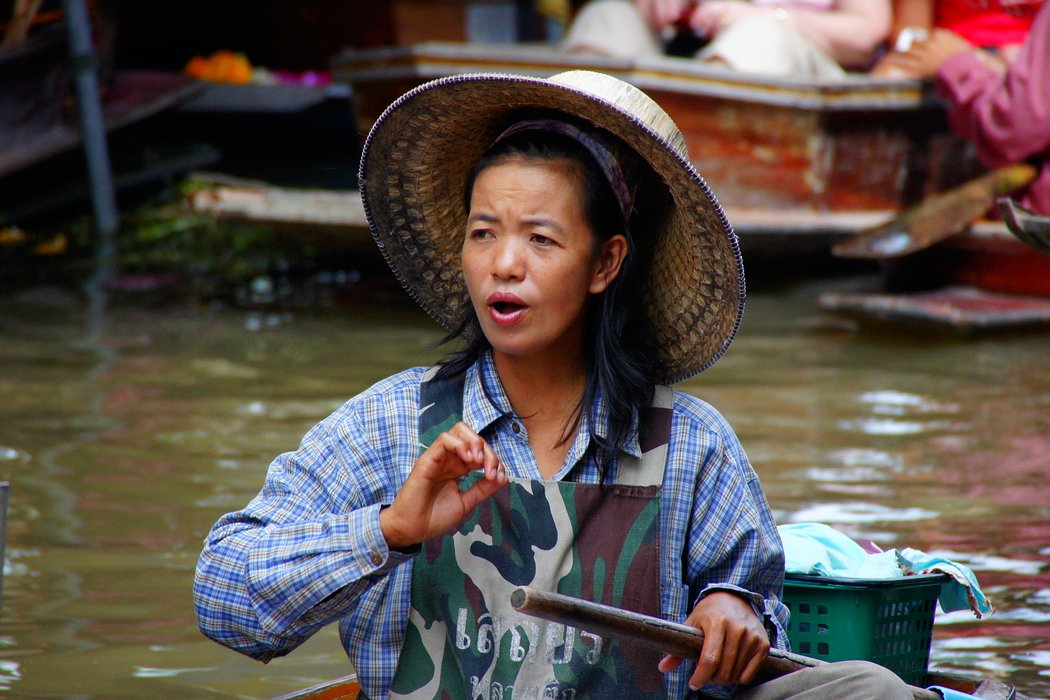
Exploring the Thai Floating Market
Market Layout and Navigation
Stepping into Damnoen Saduak Floating Market feels like entering a vibrant maze of canals and colors. The market is sprawled across a network of narrow waterways, where wooden boats glide gracefully, loaded with goods and guided by skilled vendors. The canal system is the lifeblood of the market, connecting various stalls and sections like veins in a living organism. Main areas of interest include the central canal, bustling with activity, and smaller side canals offering a more tranquil experience. As you navigate, you’ll find clusters of boats selling fresh produce, handicrafts, and mouth-watering street food.
You have two main options for exploration: by boat or on foot. Renting a boat immerses you in the heart of the action, allowing you to float alongside vendors and even make purchases directly from your vessel. It’s an intimate way to experience the market’s pulse. Alternatively, walking along the canal banks gives you a broader perspective and the freedom to move at your own pace. Both methods have their charms, and many visitors opt for a combination of the two to fully appreciate everything the market has to offer.
- Boat Exploration: Offers an authentic experience and close interaction with vendors.
- Walking Tours: Provides flexibility and a chance to explore side stalls and alleys.
- Combination Approach: Maximizes exposure to all facets of the market.
Tip: Negotiate boat rental prices before boarding, and consider sharing a boat with other travelers to reduce costs.

Shopping Experience
Damnoen Saduak is a shopper’s paradise, brimming with a diverse array of goods. Fresh fruits and vegetables are piled high on boats, showcasing Thailand’s rich agricultural bounty. Exotic options like dragon fruit, rambutan, and durian tempt your taste buds and curiosity. Handicrafts and souvenirs abound, from intricately carved wooden items to colorful Thai silk scarves. These make perfect keepsakes or gifts for loved ones back home. Don’t miss the chance to explore stalls offering local products like spices, herbs, and traditional textiles, which provide a deeper connection to Thai culture.
Bargaining is an integral part of the shopping experience here. Vendors expect a bit of haggling, and it’s a friendly way to engage with them. Start by offering about 50-60% of the initial price and negotiate from there. Always maintain a cheerful demeanor—smiles go a long way in Thailand. To avoid overpriced items, it’s wise to compare prices at a few stalls before making a purchase. Be cautious of items that seem suspiciously cheap; authenticity may be compromised.
- Fresh Produce: Try before you buy—vendors often offer samples.
- Handicrafts: Look for unique, handcrafted items rather than mass-produced souvenirs.
- Local Products: Spices and textiles are excellent, portable gifts.
Tip: Carry cash in small denominations, as most vendors do not accept credit cards and it’s easier for negotiating prices.
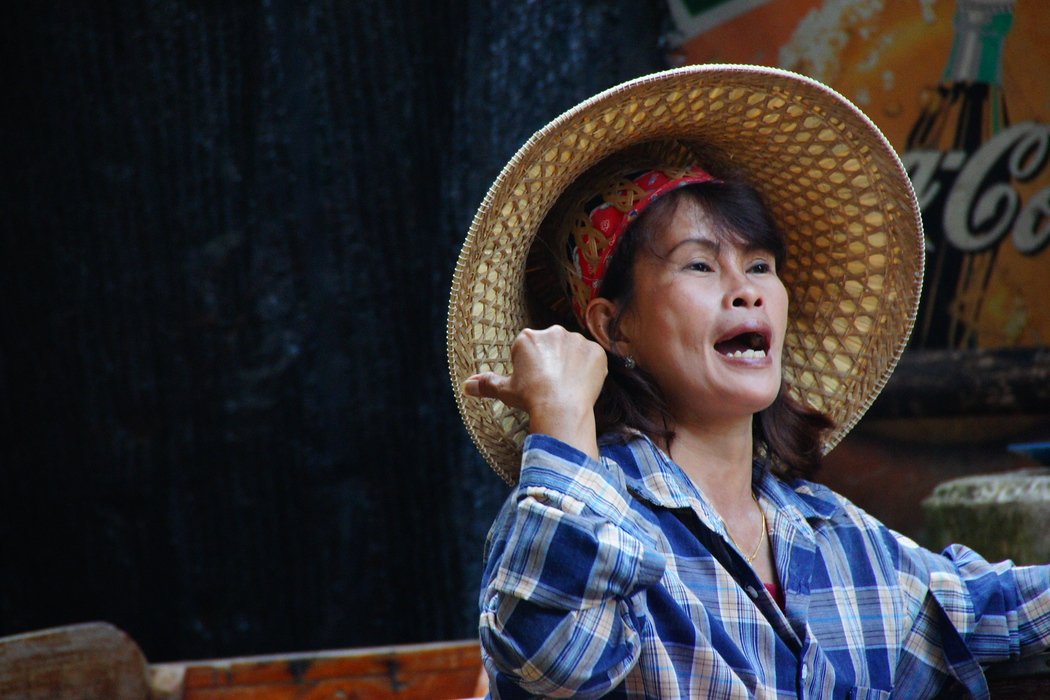
Culinary Delights
Food is at the heart of Damnoen Saduak, and the market is a haven for food lovers. Must-try street foods and snacks include pad thai cooked on floating woks, coconut pancakes freshly made before your eyes, and mango sticky rice that’s both sweet and satisfying. The floating food stalls and restaurants offer an authentic dining experience you won’t find elsewhere. Imagine savoring a bowl of aromatic noodle soup while seated on a wooden boat, the gentle sway of the canal adding to the ambiance.
Hygiene is an important consideration when indulging in street food. Stick to stalls that appear clean and have a steady stream of customers—a good sign of fresh turnover. Don’t be shy about watching the food preparation process to ensure it meets your standards. If you have dietary restrictions, communicate them clearly; many vendors understand basic English or can accommodate requests with gestures.
- Pad Thai: A classic dish that’s a safe bet for all palates.
- Coconut Pancakes: A delightful snack that’s crispy on the outside and soft inside.
- Mango Sticky Rice: A quintessential Thai dessert that’s a must-try.
Tip: Bring hand sanitizer or wet wipes to clean your hands before eating, especially if you’re handling money and goods in the market.
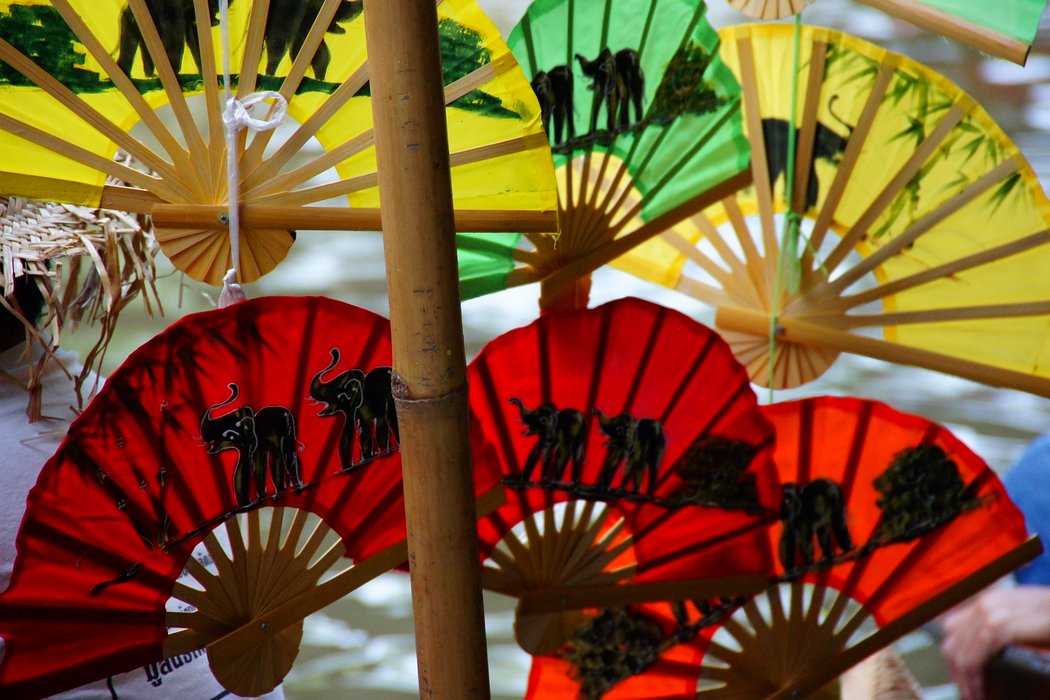
Planning Your Day Trip To Damnoen Saduak: Thai Floating Market
Best Time to Visit
Timing your visit to Damnoen Saduak Floating Market can make all the difference in your experience. Optimal visiting hours are in the early morning, typically between 7:00 AM and 9:00 AM. During these hours, the market is at its most vibrant, with vendors setting up their boats and locals going about their daily shopping. The cooler morning temperatures also make for a more comfortable exploration. The market operates seven days a week. So, you have the flexibility to choose any day that fits your schedule. However, weekends tend to be busier due to the influx of both tourists and local shoppers.
Weather is another crucial factor to consider. Thailand’s climate is generally hot and humid, but the period from November to February offers cooler and more pleasant weather conditions. Visiting during these months means you’ll avoid the sweltering heat and the heavy rains of the monsoon season, which runs from May to October. Rain can sometimes disrupt market activities, so it’s wise to check the weather forecast before planning your trip.
- Arrive between 7:00 AM and 9:00 AM for the best experience.
- Market is open daily, but weekdays are less crowded than weekends.
- November to February is the ideal time to visit due to favorable weather.
Tip: Plan to arrive as early as possible to enjoy the market at its liveliest and capture stunning photos in the soft morning light.
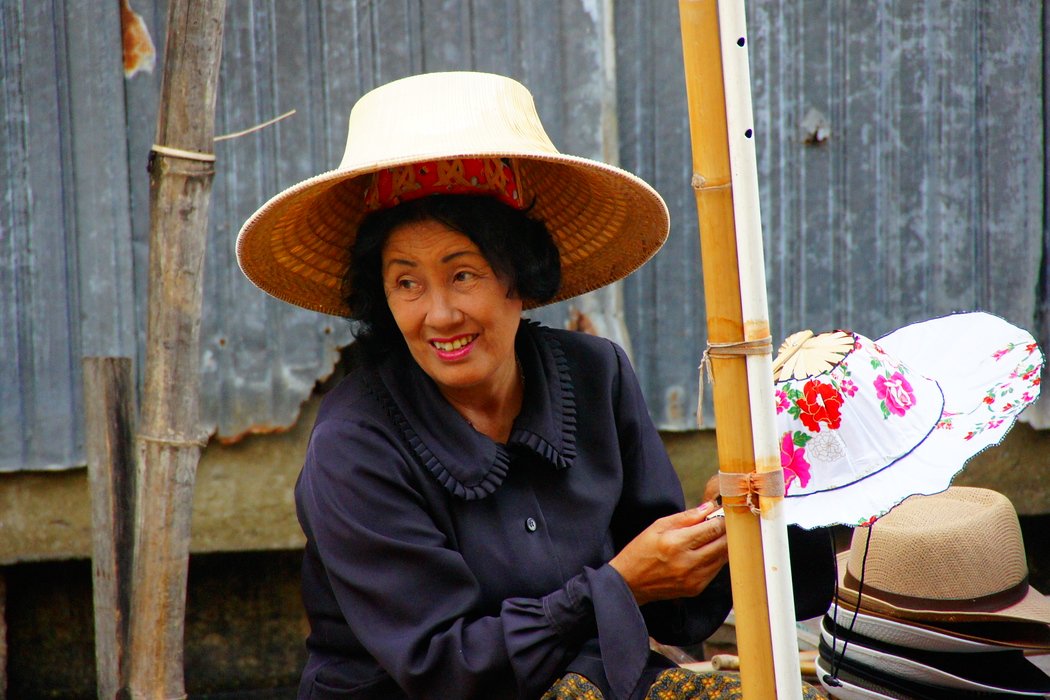
How to Get There from Bangkok
Getting to Damnoen Saduak Floating Market from Bangkok is relatively straightforward, with several transportation options to suit different preferences and budgets.
Public Bus
Taking a public bus is the most economical option. Buses depart from the Bangkok Southern Bus Terminal (Sai Tai Mai) and head directly to Damnoen Saduak. The journey takes about 2 hours, depending on traffic. Buses are usually air-conditioned and comfortable, making for a pleasant ride through the Thai countryside. This option allows you to experience local travel methods and perhaps mingle with residents along the way.
- Cost-effective, with tickets typically around 50-70 Thai Baht one way.
- Buses depart frequently, especially in the early morning.
- Experience local life during your journey.
Tip: Arrive at the bus terminal early to secure a seat and confirm the bus schedule, as timings can occasionally change.
Guided Tours
If you prefer a hassle-free experience, guided tours are an excellent choice. Many tours offer hotel pickup and drop-off, transportation, and sometimes include additional stops at nearby attractions like the Maeklong Railway Market. Tours provide insightful commentary about the market’s history and Thai culture, enhancing your overall experience. Prices vary but generally range from 1,000 to 2,000 Thai Baht per person.
- Convenient and time-saving, eliminating the need to navigate public transport.
- Includes extras like guided commentary and additional sightseeing.
- Ideal for first-time visitors who want a comprehensive experience.
Tip: Book your tour in advance, especially during peak tourist season, to ensure availability and possibly secure early booking discounts.
Private Taxi or Car Hire
For maximum flexibility and comfort, consider hiring a private taxi or car. This option allows you to set your own schedule, make spontaneous stops, and travel directly to the market without transfers. The journey typically takes about 1.5 hours, depending on traffic conditions. While more expensive, costing between 2,000 to 3,500 Thai Baht for a round trip, sharing the ride with friends or fellow travelers can make it more affordable.
- Direct and fastest route to the market.
- Flexibility to customize your itinerary and explore at your own pace.
- Comfortable and private, ideal for groups or families.
Tip: Negotiate the fare upfront and ensure that the price includes the return trip to avoid any misunderstandings later.
Approximate Travel Times and Costs
- Public Bus: ~2 hours | 50-70 THB one way
- Guided Tour: ~1.5-2 hours (with pickups) | 1,000-2,000 THB per person
- Private Taxi/Car Hire: ~1.5 hours | 2,000-3,500 THB round trip
Tips for Choosing the Best Option
- Consider your budget: Public buses are cheapest, private cars are most expensive.
- Think about convenience: Guided tours and private cars offer door-to-door service.
- Assess your comfort with local travel: If you enjoy navigating public transport, buses can be an adventure.
Tip: Match your choice to your travel style—if you’re adventurous and budget-conscious, opt for the bus; if you prefer ease and are willing to spend more, a guided tour or private car is best.
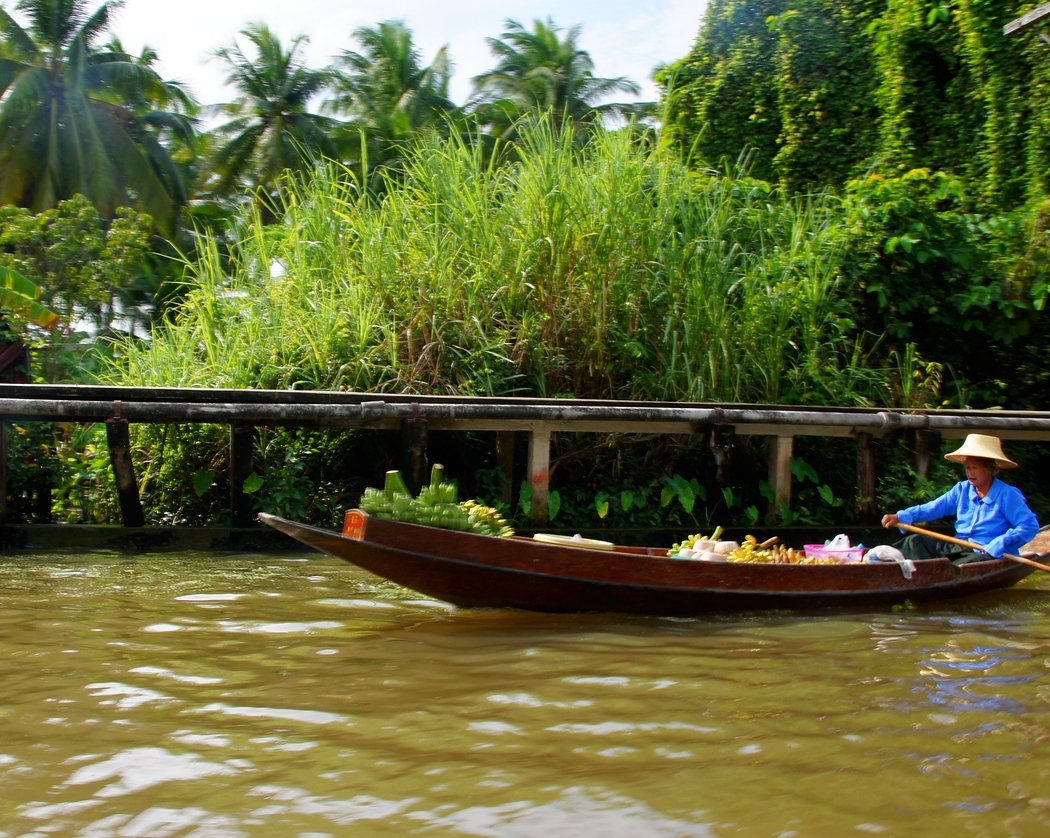
Damnoen Saduak: Activities and Cultural Experiences
Boat Tours
How to Hire a Boat
Navigating the canals of Damnoen Saduak Floating Market by boat is an experience you won’t want to miss. Hiring a boat is straightforward, with numerous boat operators available at the market entrance and along the canal banks. Look for official vendors who display clear signage and have standardized pricing to ensure a fair deal. It’s perfectly acceptable to negotiate the price, but remember to do so politely. Once you’ve agreed on terms, your boatman or woman will help you aboard a traditional long-tail boat, and your adventure begins.
- Official vendors often wear uniforms or have ID badges.
- Negotiate prices politely, aiming for a win-win situation.
- Ensure safety measures like life jackets are available on the boat.
Tip: Hire a boat with a canopy to protect yourself from the sun and occasional splashes from the canal.
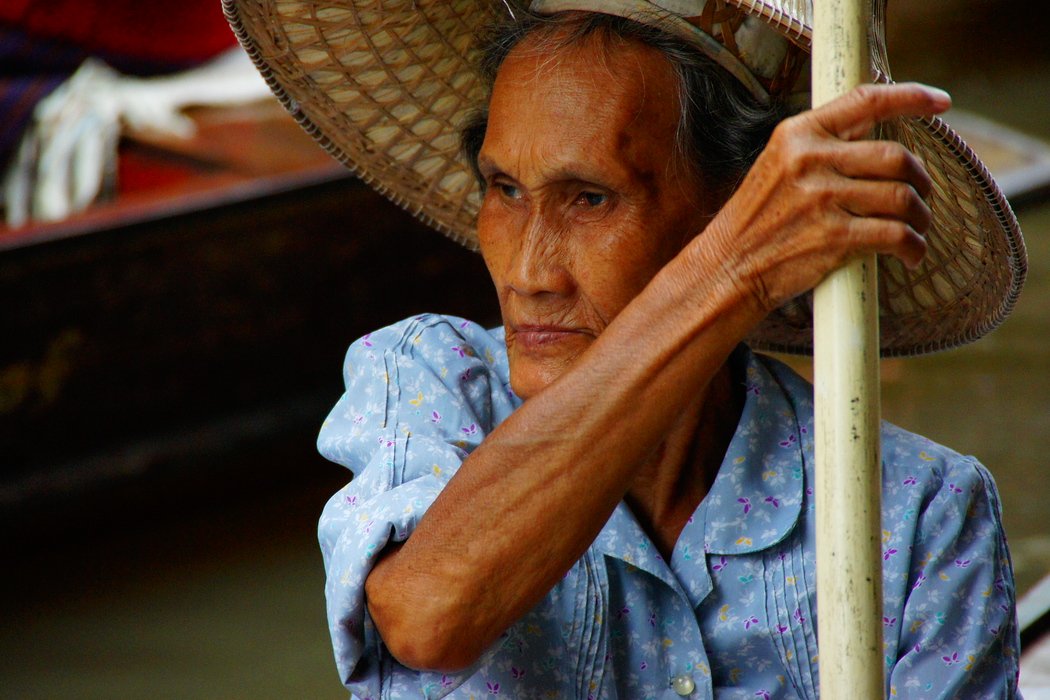
Different Types of Boat Tours Available
There’s a variety of boat tours to suit different preferences and schedules. Private tours offer a personalized experience, allowing you to set your own pace and focus on the areas that interest you most. Group tours are more economical and provide a social atmosphere where you can meet fellow travelers. Some tours include stops at local workshops or plantations, adding an extra layer of cultural immersion. Specialized tours might focus on photography, food tasting, or off-the-beaten-path exploration, catering to niche interests.
- Private Tours: Customized itineraries, more privacy, higher cost.
- Group Tours: Set routes, shared with others, budget-friendly.
- Specialized Tours: Themed experiences like culinary or photography tours.
Tip: Ask about the tour itinerary beforehand to ensure it includes the spots you most want to see.
Pricing and Duration
The pricing of boat tours varies depending on the type of tour and duration. On average, a standard one-hour private tour may cost around 1,000 to 1,500 Thai Baht, while group tours can be as low as 200 to 500 Thai Baht per person. Tour durations typically range from 30 minutes to two hours, giving you flexibility based on your schedule. Longer tours offer a more relaxed experience, allowing you to delve deeper into the market’s hidden corners and perhaps visit nearby villages.
- Standard Private Tour: 1,000-1,500 THB | 1 hour
- Group Tour: 200-500 THB per person | 1 hour
- Extended Tour: Additional costs apply | Up to 2 hours
Tip: Confirm the total cost and duration upfront, and check if there are any additional fees for stops or attractions along the way.
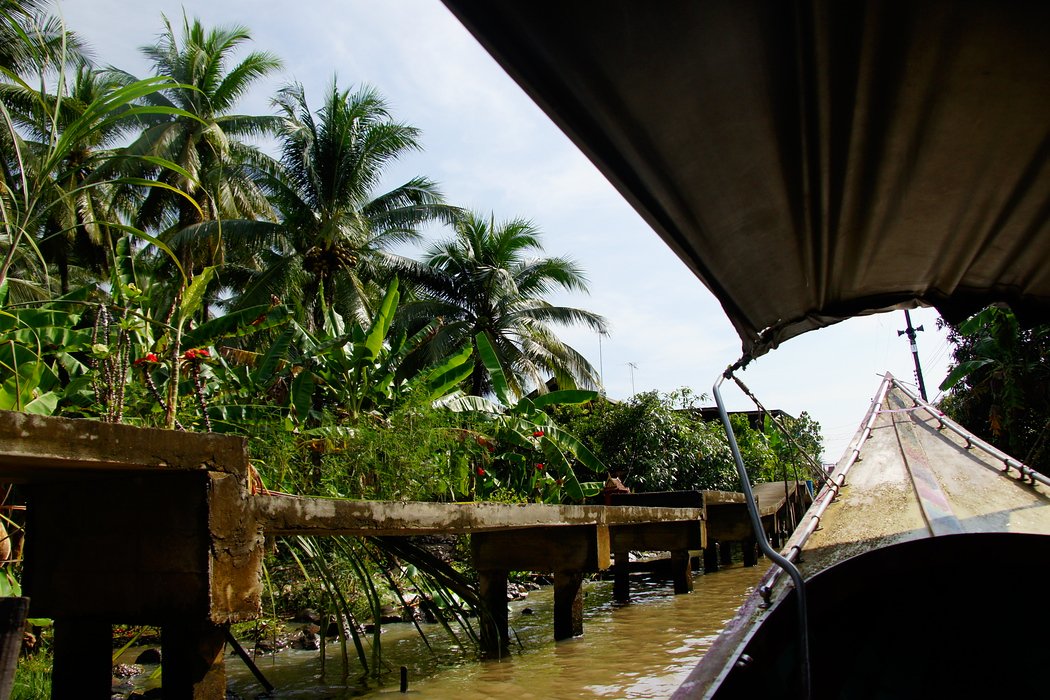
Interacting with Locals
Language Tips and Common Phrases
While many vendors speak basic English, learning a few Thai phrases can go a long way in enhancing your interactions. Simple greetings like “Sawadee kha” (for women) or “Sawadee krub” (for men) mean “Hello” and are warmly received. Saying “Khop khun kha/krub” for “Thank you” shows appreciation. When bargaining, phrases like “Lot dai mai?” meaning “Can you lower the price?” can be very helpful. Locals will appreciate your effort to speak their language, often leading to better service or discounts.
- “Hello”: Sawadee kha (female) / Sawadee krub (male)
- “Thank you”: Khop khun kha/krub
- “How much?”: Tao rai?
Tip: Practice your pronunciation beforehand, as tonal differences can change meanings in Thai.
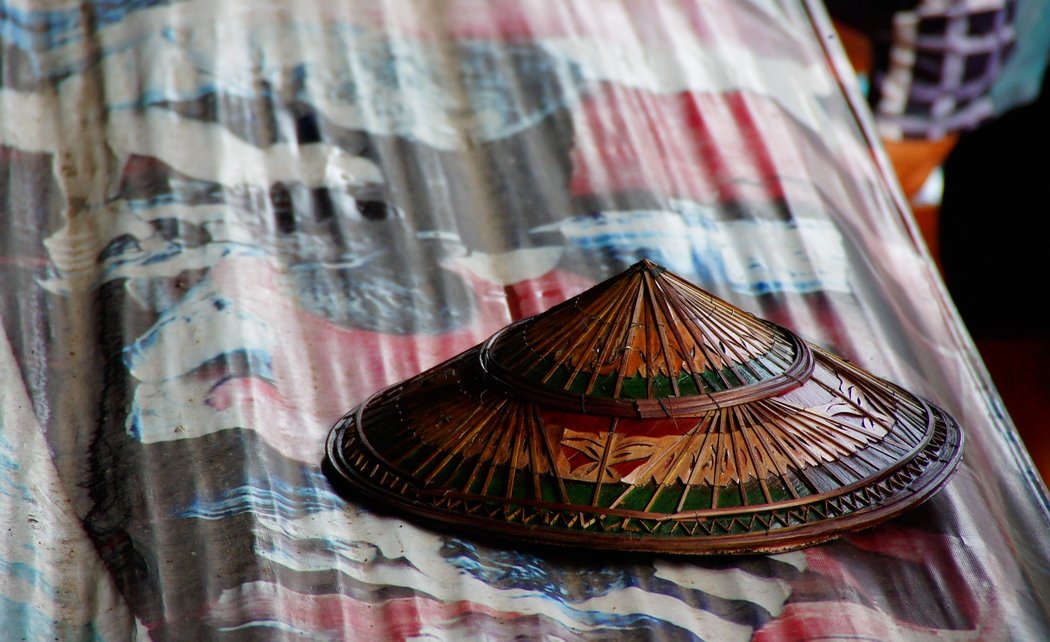
Nearby Attractions
Visiting the Maeklong Railway Market
Just a short distance from Damnoen Saduak lies the Maeklong Railway Market, a unique market set along active train tracks. Vendors lay out their goods on the rails, and when the train approaches, they swiftly retract their awnings and pull back their products. It’s a thrilling sight as the train passes inches away from the stalls. Visiting this market offers a rare glimpse into the adaptability and resourcefulness of Thai market culture. It’s best to check the train schedule in advance to ensure you witness this event.
- Experience the “umbrella pulldown” as vendors make way for the train.
- Shop for fresh produce and local delicacies at bargain prices.
- Immerse yourself in local life away from the typical tourist spots.
Tip: Stay alert and follow safety guidelines, keeping a safe distance when the train approaches.
Exploring Local Temples and Historical Sites
The area around Damnoen Saduak is rich with temples and historical sites that offer insight into Thailand’s spiritual and architectural heritage. Temples like Wat Bang Kung, known for its chapel enveloped by the roots of a banyan tree, provide a serene escape from the bustling market. Exploring these sites allows you to appreciate intricate designs, sacred statues, and the peaceful ambiance of Buddhist worship spaces. Remember to dress modestly and remove your shoes when entering temple buildings.
- Wat Bang Kung: Famous for its tree-covered chapel and historical significance.
- Wat Chulamanee: Known for beautiful murals and intricate carvings.
- Cultural Immersion: Learn about Buddhist practices and local traditions.
Tip: Carry a lightweight scarf or shawl to cover your shoulders when visiting temples.
Combining Trips for a Full-Day Experience
To make the most of your journey from Bangkok, consider combining trips to include the floating market, Maeklong Railway Market, and local temples for a full-day adventure. Many tour operators offer packages that seamlessly integrate these attractions, providing transportation and guided commentary. This approach maximizes your time and offers a diverse range of experiences, from shopping and cultural exploration to witnessing unique local phenomena. Be prepared for a packed schedule, but rest assured that the variety will keep the day engaging.
- Efficient Planning: Save time and logistics hassles with combined tours.
- Variety of Experiences: Enjoy shopping, sightseeing, and cultural activities.
- Value for Money: Package deals often offer better rates than booking separately.
Tip: Bring snacks and stay hydrated, as the day’s activities can be energy-intensive.
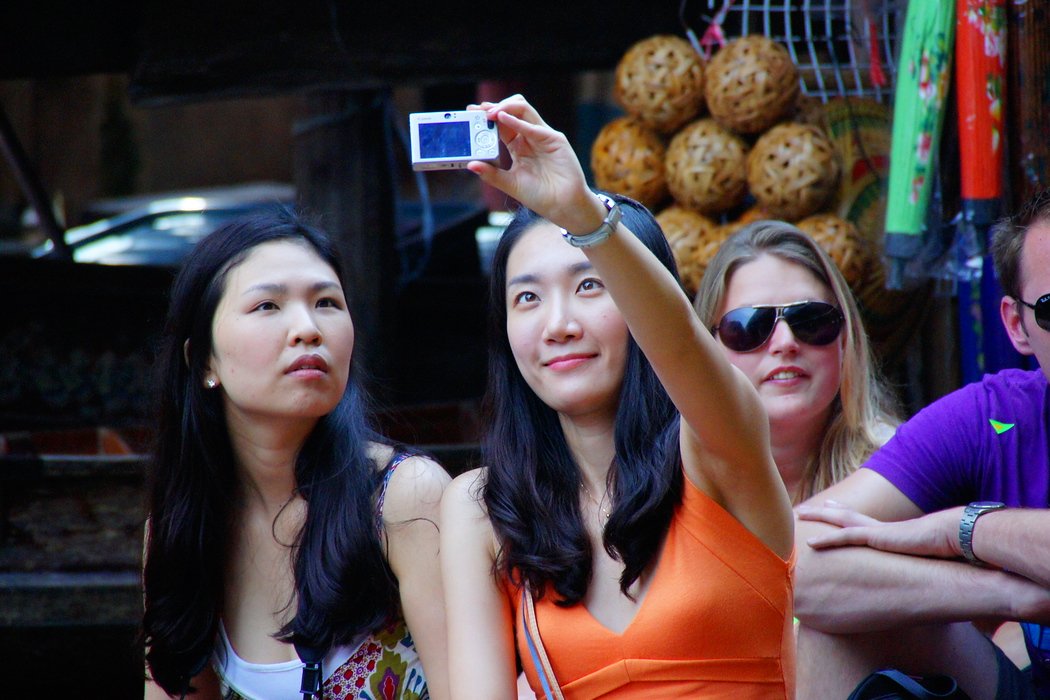
Is Damnoen Saduak Worth It? An Honest Look
Let’s be real for a second: Damnoen Saduak is not some untouched, hyper-local secret. It’s loud, busy, touristy, and there are more selfie sticks than fruit boats at times. And yet… it can still be a fun day out if you go in with the right expectations.
Think of it less as “pure local market” and more as a floating theme park built around old canal life. You’re there for the visuals. The energy. The chaos on the water. Those little moments of connection with vendors when you smile, joke, and buy a snack.
Who will enjoy Damnoen Saduak:
- First-time visitors to Thailand
- Travel photographers
- Families and casual travelers who like a bit of spectacle
- Anyone who wants that classic “floating market photo”
Who might be disappointed:
- Travelers hunting for deeply local, non-touristy markets
- People who hate crowds or don’t like feeling “sold to”
- Those expecting bargain-basement prices for souvenirs
If you go in knowing it’s touristy, you can relax, enjoy the show, eat good food on the water, and still walk away with some great memories and photos.
Day Trip Logistics: DIY vs Tour vs Private Driver
You already know it works as a day trip from Bangkok. The question is how you want to do it.
Quick Comparison: Ways To Get To Damnoen Saduak
| Option | Approx Cost Level | Travel Time (one way) | Flexibility | Comfort | Best For |
|---|---|---|---|---|---|
| Public bus + local | Low | ~2–2.5 hours | Medium | Basic | Budget travelers, slow travel fans |
| Group tour | Medium | ~1.5–2 hours | Low | Decent | First-timers, families, low-stress days |
| Private taxi/driver | High | ~1.5 hours | High | High | Small groups, photographers, late risers |
Doing It Yourself By Public Transport
If you enjoy a bit of adventure and want to keep costs down, going by public transport is totally doable.
Here’s a simple game plan:
- Head to Bangkok’s Southern Bus Terminal (Sai Tai Mai) early in the morning.
- Look for buses or minibuses heading towards Damnoen Saduak / Ratchaburi. Ask staff to confirm you’re on the right one.
- From where you’re dropped off, you’ll usually find songthaews (shared pickups), tuk-tuks, or motorbike taxis that can get you to the market piers.
You might be funneled towards “boat ticket offices” along the way. Some are legit, some are opportunistic. If someone quotes a shockingly high boat price, just smile, walk away, or ask around. You’re not locked in.
Pros of DIY:
- Cheapest overall
- Feels more “local”
- You can linger as long as you want
Cons of DIY:
- Requires some Thai phrases and patience
- Can involve a bit of confusion with multiple transfers
- Easy to overpay for the boat if you don’t ask around
Joining A Group Tour From Bangkok
Most visitors end up taking a half-day group tour that includes hotel pickup, transport, and a basic boat ride through the canals.
What you can usually expect:
- Early hotel pickup (often between 6:00–7:00 a.m.)
- Air-conditioned minivan or bus
- Short stop at a “boat pier” where your main canal tour begins
- 1–2 hours of free time around the market area
Some tours add Maeklong Railway Market or a temple stop, which is a nice bonus if you don’t want to plan anything yourself.
Pros of a group tour:
- Zero logistics stress
- Good if you’re short on time or traveling with kids
- Easy way to combine multiple attractions in one day
Cons:
- You move on the group’s schedule, not yours
- Limited time at the market
- Might be taken to a few “shopping stops” you didn’t ask for
If you go the tour route, try to pick one that clearly lists how long you actually spend on the water and at the market itself. That’s the core experience.
Hiring A Private Taxi Or Driver
If you want total flexibility and you’re traveling as two or more people, a private driver starts to make a lot of sense.
What this looks like in practice:
- You agree on a flat price for a round-trip plus waiting time
- You set your departure time from Bangkok (early is still best)
- You can ask to add extra stops, like Maeklong Railway Market or a temple
- Your driver waits while you explore
It’s the most comfortable option and perfect if you:
- Carry a lot of camera gear
- Hate waking up super early
- Want a blend of comfort and independence
Just make sure you agree on:
- Total price
- Whether tolls and fuel are included
- How many hours of waiting time you get
Sample Day Trip Itineraries From Bangkok
You’ve got your transport sorted. Now let’s plug it into a day that actually flows well.
Half-Day “Classic” Floating Market Trip
This works best with a group tour or private driver.
Rough timeline:
- 6:00 a.m. – Leave Bangkok
- 7:30–8:00 a.m. – Arrive at Damnoen Saduak area, hop on a boat
- 8:00–9:30 a.m. – Boat ride + exploring canals, grabbing breakfast on the water
- 9:30–10:30 a.m. – Wander on foot, shoot photos, last snacks and souvenirs
- 10:30–11:00 a.m. – Depart back to Bangkok
- 12:00–12:30 p.m. – Back in the city in time for lunch and an afternoon nap
This is ideal if you:
- Don’t want to be out all day
- Have limited time in Bangkok
- Want the “floating market” experience without overthinking things
Full-Day Combo: Floating Market + Maeklong Railway Market + Temple
If you want to maximize your day out of Bangkok, you can roll multiple experiences into one.
Sample full-day flow:
- 6:00 a.m. – Depart Bangkok
- 7:30–9:00 a.m. – Damnoen Saduak Floating Market (arrive early, do your main boat ride + breakfast)
- 9:30–10:30 a.m. – Extra wandering, photos, optional longer boat detour into quieter canals
- 11:00 a.m. – Head to Maeklong Railway Market
- 11:30–12:30 p.m. – Explore Maeklong, watch the train pass through if timings line up
- 12:30–1:30 p.m. – Lunch near Maeklong or on the way
- 2:00–3:00 p.m. – Stop at a nearby temple (for example, a riverside or tree-wrapped temple in the area)
- 3:00–4:30 p.m. – Drive back to Bangkok
You’ll be tired at the end of the day, but it’s the good kind of tired—markets, food, temples, and trains all rolled into one.
Budget Breakdown: What You’re Likely To Spend
Everyone’s travel style is different, but here’s a rough, per-person look at what a day trip might cost, not counting big souvenir sprees.
| Category | Shoestring Style | Comfortable Style | Splash-Out Style |
|---|---|---|---|
| Transport | Public bus + local transfers | Group tour from Bangkok | Private driver split with 2–4 people |
| Boat ride | Shared boat, short loop | Shared or small-group longer ride | Private boat, longer and quieter route |
| Food | Snacks + simple noodles | Mix of snacks + sit-down lunch | Constant grazing + nicer riverside lunch |
| Shopping | Minimal, 1–2 small souvenirs | A few gifts + maybe canal art | Decorative pieces, textiles, more souvenirs |
| Total feel | Under tight control | Good value, no big splurges | You’re here once, might as well enjoy it |
If you’re on a strict budget, your main saving comes from how you get there and how “premium” your boat ride is. Food and small souvenirs don’t have to break the bank unless you go wild.
Eating Well At And Around The Floating Market
You could easily spend your entire visit just snacking your way down the canal. And honestly, that’s not a bad way to do it.
Snacks To Hunt Down
You’ll see variations of these everywhere:
- Grilled skewers – Pork, chicken, fish balls, sometimes sausages
- Boat noodles – Tiny bowls of rich broth and rice noodles
- Coconut pancakes (khanom krok) – Crispy outside, gooey coconut center
- Mango sticky rice – Sweet, sticky, tropical happiness
- Fresh fruit – Pineapple, watermelon, jackfruit, dragon fruit, and more
If you’re unsure what something is, just smile, point, and ask the vendor if it’s spicy. They’ll usually be honest with you.
Simple Food Safety Rules
This isn’t the place to stress excessively, but a few common-sense guidelines help:
- Go where locals and other travelers are lining up
- Choose stalls where the food looks fresh and hot
- Avoid anything that’s been sitting in the sun looking tired
- Drink bottled water or sealed drinks if you have a sensitive stomach
A small hand sanitizer or wet wipes are your best friend here. Money, boats, railings… you touch a lot before you eat.
Eating Off The Water
If you prefer a proper seat and fan, there are simple restaurants and food courts just off the main canal where you can:
- Order fried rice, curries, and stir-fries
- Sit down, cool off, and regroup
- Watch the boats without being in the middle of them
This can be especially handy if you’re traveling with kids or older family members who need breaks from the heat and crowds.
Staying Near Damnoen Saduak (Instead Of Bangkok)
Most people just day-trip it, but if you want to slow things down, you can absolutely sleep near the market.
Who Should Consider Sleeping Nearby
- Photographers who want pre-dawn or post-crowd shots
- Slow travelers exploring the region beyond the market
- Anyone combining several days in Ratchaburi and nearby provinces
You’ll find:
- Canal-side homestays run by local families
- Small guesthouses with basic rooms and breakfast
- Simple riverside resorts aimed at domestic tourists
The big perk? You can walk or ride a short distance to the market before the tour buses roll in, then retreat when it gets too hectic.
Alternative Floating Markets Near Bangkok
If you like the idea of a floating market but want something a bit less intense, there are alternatives that pair nicely with—or even instead of—Damnoen Saduak.
Quick Comparison: Popular Floating Markets Near Bangkok
| Market | Distance From Bangkok | Main Days | Vibe | Best For |
|---|---|---|---|---|
| Damnoen Saduak | Furthest of the group | Daily | Very touristy | First-timers, photos, spectacle |
| Amphawa | Closer | Fri–Sun | Lively, local-ish | Evening trip, food, canal cafes |
| Taling Chan | Very close | Weekends | Compact, relaxed | Short visit, staying in Bangkok |
| Khlong Lat Mayom | Very close | Weekends | More local feeling | Food lovers, repeat Bangkok visitors |
You don’t have to choose only one forever, but it’s worth thinking about which vibe fits your style.
Amphawa Floating Market
Amphawa has more of an evening and night-time buzz, with wooden shop-houses, canalside cafes, and firefly boat trips. It still gets busy, but it leans slightly more local than Damnoen Saduak and feels like a hybrid of market and riverside town.
Taling Chan & Khlong Lat Mayom
These two are much easier to reach from central Bangkok and can be combined in a lazy weekend half-day.
Expect:
- Plenty of food stalls
- Short boat rides available
- More Thai families than international tour groups
If you’re short on time or don’t want to leave the city for hours, these markets scratch the floating-market itch without the long drive.
Photography Tips For Damnoen Saduak
Damnoen Saduak is both heaven and chaos for photographers. Boats are bumping, people are moving, light is changing fast. It’s a fun challenge.
Best Time And Light
- Early morning gives you soft, flattering light and more local activity
- By late morning, the light is harsher and reflections on the water can be strong
- If you’re shooting from a moving boat, embrace slightly higher shutter speeds to keep things sharp
Even if you’re just using a phone, shooting early makes everything look better.
Lenses And Angles
If you’re carrying a camera:
- A wide-angle lens captures the canal scenes and traffic
- A short telephoto (like 50–85mm equivalent) is perfect for portraits from a distance
- Don’t be afraid to shoot overhead from bridges or piers to get that “river of boats” look
Change your perspective: sit low in the boat, shoot from the steps, lean over railings (carefully!) and look for reflections.
Respectful Portraits
Many vendors are totally used to being photographed, but they’re still people doing a job.
A few simple guidelines:
- Smile first, raise your camera second
- If you get eye contact and a friendly reaction, go ahead
- Consider buying something small from someone you photograph a lot
- If someone clearly doesn’t want their photo taken, just move on
Often, a little shared laugh over your attempts at Thai will do more for your portraits than any lens.
Practical Tips And Common Mistakes To Avoid
To keep your day smooth and enjoyable, a few final practical bits.
What To Bring
- Lightweight clothes that you don’t mind getting a little splashed
- Hat and sunglasses
- Sunscreen (the sun reflects off the water)
- Small backpack or crossbody bag
- Plenty of small bills and coins for snacks and souvenirs
- Portable fan or small towel if you struggle with heat
Common Mistakes
- Arriving too late: By mid-morning it’s brutally hot and much more crowded.
- Not confirming boat prices: Agree on the price and duration before you sit down.
- Holding your phone or camera over the water with one hand: One bump from another boat and it’s gone.
- Expecting a purely “local” experience: This is a tourist-oriented spot. Enjoy it for what it is.
- Forgetting ear protection if you’re noise-sensitive: Long-tail boat engines can get loud.
Key Questions About Visiting Damnoen Saduak Floating Market: Honest Answers & Practical Tips
Is Damnoen Saduak Floating Market still worth visiting, or is it too touristy now?
It depends. If you go in expecting a raw, local-only market, you’re probably going to hate it. Damnoen Saduak is firmly on the tourist circuit, there are lots of tours, and you will be asked to buy things… a lot.
But if you frame it as a noisy, colourful, slightly chaotic floating theme park of canal life, it can still be a really fun half-day out. You get those classic boat shots, you eat great snacks on the water, and you see a slice of Thailand that doesn’t exist in many places anymore. If you want something more low-key and local, you’re usually better off with weekend markets like Amphawa, Taling Chan, or Khlong Lat Mayom instead.
What are the current opening hours for Damnoen Saduak, and what time should I arrive?
Early. The floating market really gets going around 7:00 a.m. and starts winding down late morning, with most of the action over by around 11:00 a.m. on a typical day.
If you want cooler temperatures, softer light for photos, and a bit more local activity before it’s fully tour-group central, I’d aim to be on the canals between 7:00 and 9:00 a.m. By late morning it’s hotter, brighter, and noticeably more crowded.
How much time do I actually need at Damnoen Saduak on a day trip from Bangkok?
Realistically, 2–3 hours at the market itself is plenty. That usually gives you time for:
- One main boat ride through the canals
- A wander on foot along the banks
- A snack session and a bit of souvenir shopping
The bigger time sink is getting there and back. From Bangkok you’re looking at roughly 1.5–2.5 hours each way depending on whether you’re on a tour, in a taxi, or using public transport. So think of it as a half-day at the market, plus travel on both sides.
Is it better to visit Damnoen Saduak on a guided tour or do it yourself by public transport?
Both work, but they suit very different travel personalities.
Absolutely. A guided tour is the easiest option: early hotel pick-up, direct transport, a basic boat ride included, and often a stop at Maeklong Railway Market or a temple. It costs more, but you don’t have to think about connections or timetables, which is nice if you’re short on time or traveling with kids. Many half-day tours from Bangkok fall in the roughly 1,000–2,000 THB per person range, depending on inclusions.
Doing it DIY by public transport is cheaper and feels more local. Buses or minibuses run from Bangkok’s Southern Bus Terminal (Sai Tai Mai) towards Damnoen Saduak for roughly 50–70 THB one way, then you connect to local transport to reach the piers. You’ll save money but spend more brainpower figuring it out.
If you love puzzling out routes and keeping costs down, DIY is fun. If you just want to show up and float, take a tour.
What is a fair price for a boat ride at Damnoen Saduak Floating Market these days?
Roughly speaking, think in this ballpark:
- Shared paddled boat (short loop, ~30–45 minutes): about 200–400 THB per person
- Private paddled boat (~1 hour): about 800–1,500 THB per boat, depending on how hard you bargain and how busy it is
If someone quotes you something wild like 2,000–3,000 THB per person for a basic canal loop, that’s when I’d smile, say no thanks, and ask elsewhere. Some group tours already include a short boat ride in the price, and then offer optional longer rides for an extra fee, so double-check what you’ve already paid for before hopping in.
Can I visit Damnoen Saduak and Maeklong Railway Market on the same day?
Yes. This is actually one of the most popular day-trip combos out of Bangkok. Many tours bundle Damnoen Saduak + Maeklong Railway Market into one full day, timing things so you float at Damnoen Saduak in the morning and then catch a train pass through Maeklong later on.
If you’re doing it independently, you’ll need to watch the Maeklong train schedule and allow time to move between the two. They’re in the same general region, but you still have transfers to think about, especially if you’re relying on minibuses and songthaews. A private driver makes the combo very easy.
Is Damnoen Saduak safe, and what common scams should I watch out for?
Overall, yes, it’s safe. The main “danger” is bumping boats, sunburn, and spending more money on souvenirs than you meant to.
Where you do need to stay alert is with overpriced boats and hard selling. Some travellers get taken to private piers well before the main market and are quoted very inflated prices for long-tail boats. If the price feels ridiculous, it probably is; just decline politely and move on. At the market itself, expect some pressure to buy souvenirs or food from certain stalls, but you’re never obliged to purchase anything.
Standard travel sense applies: keep valuables zipped up, be careful getting in and out of boats, hang onto your phone and camera over the water, and avoid flashing large wads of cash.
Is Damnoen Saduak Floating Market suitable for kids, older travellers, and families?
Mostly, yes. It’s busy and stimulating, which kids often love, and the whole boat-ride element tends to be a hit with families.
The two big watch-outs are heat and mobility. Boats offer no air-con and limited shade, and moving around involves steps, ramps, and sometimes slightly wobbly piers. For older travellers or anyone with balance issues, I’d choose:
- A boat with a canopy for shade
- A shorter ride rather than a marathon canal session
- Occasional breaks in a café or simple restaurant off the water
If you’re traveling with a stroller, you’ll probably end up carrying it up and down some steps, so a baby carrier can be easier.
How accessible is Damnoen Saduak for travellers with limited mobility?
Not really. Damnoen Saduak wasn’t designed with accessibility in mind. Expect:
- Uneven walkways and narrow paths
- Steps up and down to piers and bridges
- Low, narrow boats that require a bit of a step and shuffle to get into
If you use a wheelchair or have significant mobility challenges, you may find it frustrating and physically demanding. In that case, I’d seriously consider skipping the boat and focusing on what you can see from the more solid walkways and bridges, or choosing a different, more accessible activity in Bangkok instead.
What should I wear and pack for a morning at the floating market?
Light. It’s hot, humid, and the sun reflects off the water.
I’d go for breathable clothing, comfortable sandals or trainers you don’t mind getting a bit wet, a hat, and sunglasses. Sunscreen is non-negotiable. A small cross-body bag or daypack works best on boats because you want your hands free when boarding or taking photos.
In your bag, I’d throw:
- A small bottle of water
- Hand sanitizer or wet wipes
- A light rain jacket or poncho in rainy season
- Earplugs if you’re sensitive to loud long-tail boat engines
- Plenty of small bills and coins for snacks and souvenirs
Are there vegetarian, vegan, or halal food options at Damnoen Saduak?
Yes. You’ll find plenty of accidentally vegetarian snacks like grilled corn, fresh fruit, coconut pancakes, mango sticky rice, and various sweets. Many noodle soups can be done without meat if you ask, but the broth is often still meat-based, so strict vegans or vegetarians need to be a bit choosy.
Halal options are more limited but not impossible, especially if you focus on seafood dishes and clearly avoid pork. If you have specific dietary needs, I’d treat the market as more of a snack stop and plan your main meal somewhere else where you can check menus more carefully.
Can I visit Damnoen Saduak without taking a boat and just walk around instead?
Absolutely. You don’t have to get on a boat if that’s not your thing. There are walkways, bridges, and market areas along the canals where you can watch the traffic, shoot photos, and snack from land-based stalls.
You’ll see more up close if you combine both: a short boat ride to get into the thick of the canal action plus time on foot to people-watch and explore at your own pace. If you’re nervous about motion sickness or crowded boats, start on foot and then decide later if you feel like hopping in.
How does Damnoen Saduak compare with Amphawa, Taling Chan, and Khlong Lat Mayom?
Think of Damnoen Saduak as the big, loud, showpiece floating market, especially popular with first-timers to Thailand. Amphawa is more of a weekend evening and night-time market with canalside restaurants, cafés, and firefly boat trips, and it draws a mix of locals and domestic tourists from Bangkok.
Taling Chan and Khlong Lat Mayom are much closer to central Bangkok and generally operate on weekends during the day. They’re smaller, more relaxed, and feel more local, with Thai families out eating and shopping.
If you want the famous postcard scene, Damnoen Saduak wins. If you care more about a casual food-focused vibe with fewer tour buses, the Bangkok-area weekend markets often feel nicer.
Roughly how much money should I budget for a day trip to Damnoen Saduak from Bangkok?
Ballpark numbers time. For a shoestring DIY day, traveling by public bus and keeping things simple, you could aim for around 600–800 THB per person: that covers two bus rides, a basic shared boat, a few snacks, and maybe a small souvenir.
For a comfortable group-tour day, I’d think more like 1,200–1,800 THB per person once you factor in the tour price, boat ride, snacks, and a bit of shopping. Many tours that include Damnoen Saduak and Maeklong fall somewhere in that range.
If you splurge on a private driver and private boat, especially as a small group, your personal spend might land in the 2,000–3,500 THB bracket depending on how many people you’re splitting costs with and how hard you go on souvenirs.
Can I fly a drone at Damnoen Saduak Floating Market or along the canals?
Nope. I really wouldn’t recommend it. Thailand has fairly strict drone regulations: camera drones are supposed to be registered with the aviation authority, and you need to follow national safety rules.
On top of that, Damnoen Saduak is crowded, full of boats, power lines, and people’s homes. It’s exactly the kind of place where a drone accident would not go down well with locals, and you could easily attract negative attention from authorities or tour operators. If you’re determined to fly in Thailand, save it for a wide-open, quiet area where drones are clearly allowed and you’ve got all the paperwork in order.
Conclusion: Visiting Damnoen Saduak Floating Market
Final Thought
Damnoen Saduak won’t be everyone’s favorite place in Thailand, but it’s hard to deny how visually dramatic and unforgettable it is. If you pair honest expectations with a smart plan—early start, fair boat price, good snacks, maybe a combo with Maeklong—you can turn what might have been a frustrating tourist trap into a genuinely enjoyable and memorable day out on the water.n turn what might have been a frustrating tourist trap into a genuinely enjoyable and memorable day out on the water.
Additional Resources
For more information and to help plan your trip, consider exploring the following resources:
- Official Tourism Website: Visit Tourism Authority of Thailand for up-to-date information on Damnoen Saduak Floating Market and other attractions.
- Travel Guides: Books like Lonely Planet Thailand or Fodor’s Bangkok offer detailed insights and tips.
- Online Forums: Check out traveler reviews and advice on websites like TripAdvisor or Travelfish.
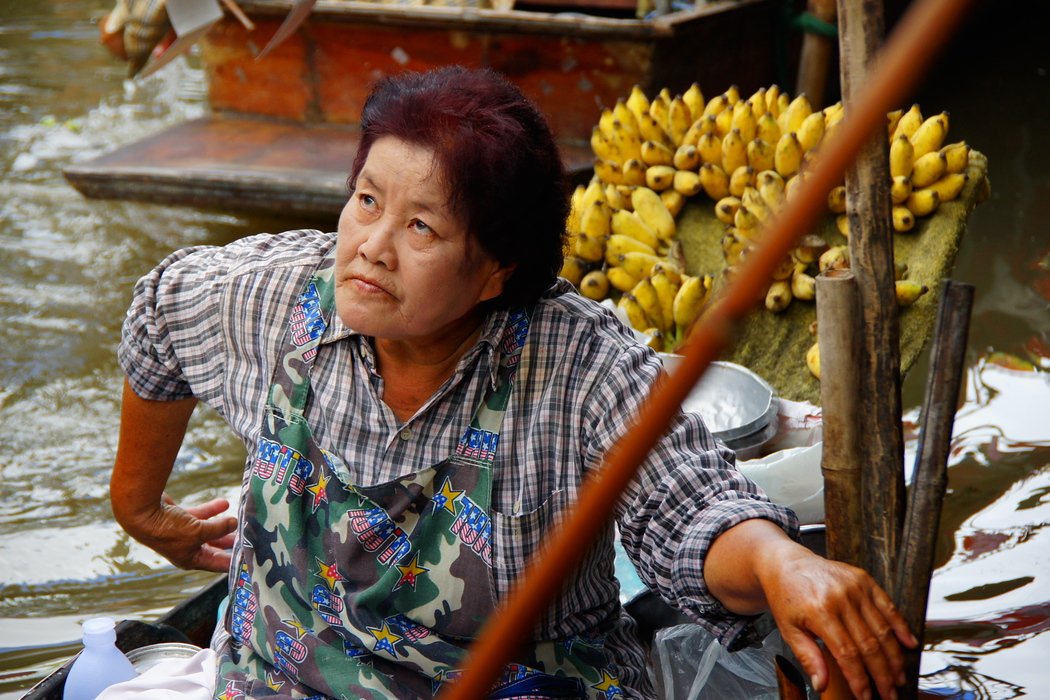
How do you feel about visiting an attraction that clearly caters towards tourists?




Nice Market.We were seeing Live Big Lizards on the banks of canal as we were moving to the center market place.
I love the floating village. For some reason, I thought these were only in Vietnam. I will be taking a SE asia trip in August of next year so I’ll be sure to pass by here!
Thanks Julio,
Indeed, you’ll notice these floating villages are quite common in SE Asia. The biggest one I’ve visited was Kampong Ayer in Brunei.
Love to visit this place. The photos are captivating, especially the ones with real people. I love to explore the historical places and local foods in Thailand. People look friendly too. Thanks for taking us there Samuel.
Thanks Noel,
You’ll have a lot of fun doing that in Thailand. I already miss the food and I left just two weeks ago!
Wonderful pictures! You captured a lot with them! I’ll be following along with you, Samuel. 🙂
Marissa
Thank Marissa!
I know what you mean… the more travelled our world becomes, the harder it is to get experiences without other tourists ruining the moment… but you did an excellent job of snapping some candids and capturing the market!
Thanks Colleen! It sure is 🙂 I’ll likely be taking my parents here in a couple of months. I think I’ll make a video this time around 🙂
Love this photo essay! Markets are among my favourite places to people watch, but I have yet to visit a floating one; looks like it would be a treasure trove for travel photography. It’s great that you were able to capture people so candidly! I’m guessing you were using a pretty long telephoto lens here?
Hey great post Sam. Love the one of the rice hat.
We’re starting to find ourselves in “touristy” situations and sometimes, just because tourists are there, doesn’t mean it’s catered to them. We’ve started going to cultural shows and musical concerts that are full of tourists, but it’s the only way to really see the traditional music and dance in some places.
Also, lots of the time if you’re in a “touristy place” half of the tourists are locals. I think it’s worse to avoid “touristy” things and miss the experiences all together in some cases.
I agree with you Nick. I like to have a balance of both when I travel. If you avoided everything that was ‘touristy’ you’d sure be missing out on a lot of things!
Fantastic images! I love the emotions you have captured in the candid photos as well as the colors of the floating markets. Sometimes you get your best images in areas catering to tourist!
Thanks Barbara!
That’s true! I think it’s because they’re used to having their photo taken and aren’t phased by it the slightest.
I like floating markets in Thailand for they are unique. I went for one in Pataya. Nice photos! 🙂
They are very unique! I’m thinking of taking my parents next year.
I will be in Thailand for a couple of weeks in November and December. These photos are psyching me up.
That’s awesome Ted! Best time of the year to be visiting Thailand 🙂 Where do you plan on going?
I am going south to Singapore, Malaysia, Borneo. Pretty excited!
That’s awesome! Try to hit up Malacca if you can.
I love that shot with the elderly Thai lady. I do have a soft spot for floating markets in South Asia, despite their increasingly touristy nature
Beautiful photos mate. I headed here later this year. I cannot wait to explore this market, it has been on my list for years.
Thanks Stephen!
There is a lot to do in and around Bangkok. As a photographer you’ll really enjoy the different opportunities.
Gorgeous, I love the large format images, it just makes the scenes pop, great job Samuel….btw do you accept guest posts, I would love to do one of my photo essays for your audience?
Thanks Noel,
I try to do photo essays at 1000 px.
I’m not currently accepting guest posts but I may open that up again next year.
I know it’s very touristic but I just loved the floating markets in Thailand, they are so unique, colorful and provide great photo opportunities. Wonderful photos, made me feel like I’m there again.
Thanks Freya!
I may head back again early next year to show my parents.
I frickin’ love those Thai cakes!
About visiting an attraction catered to tourists. It’s not something that’s my first choice and I try to avoid it rather than search for it. But some attractions are just too good to skip.
Thanks Angela!
I agree with you regarding tourist attractions. I don’t want to cover everything that’s in a guidebook; however, certain things are worth visiting.
Great photos as usual Sam! The photos, food, and even hats look great but man that water is just well not very appealing. I like visiting the roads less traveled. The wifey on the other hand likes the popular places. After all they are popular for a reason as she would put it.
Thanks Thomas! Yeah, unfortunately the waters (whether at this canal or taking a water taxi in Bangkok) tend to be filthy. I think a mix of both types of travel is ideal.
Gorgeous pictures Sam!
Thanks Flip! 🙂
Inevitably I often end up at tourist attractions in my travels. There is a reason why they are tourist attractions in the first place. So to me they are worth a visit. I just don’t like it when they get too crowded or expensive. So if I go or not will highly depend on my mood.
Hey Sherry,
I feel the same way you do about visiting these kinds of places. It’s often dictated by my mood and prices. Sometimes I’ll just randomly wander around somewhere instead of visiting a popular attraction. I often find that just as (if not more) rewarding.
Stunning photopraphs very real and showing great emotion!
great essay! well done!
Thanks Karin!
These photos are breathtaking!
Thanks Andi! Floating markets are a great place to take shots of people.
Wonderful photos – you’re skilled at capturing people in the moment. 🙂
Thanks Maria 🙂 I’m glad they don’t always notice 😉
Splendid and vivid photo essay! I especially like the portraits in this series!
Thanks Lori! I’ll be sharing more photo essay over the next coming days 🙂
The place is certainly very touristy! I was there several years ago, and surprisingly I did not see many if any tourists that morning as well. I was with a local in my boat. Honestly I liked sitting and watching the market so that part was good, but still the overly touristy nature of the market annoyed me overall
I agree with what you’re saying. I don’t think I’d ever come back here again; however, it is was ‘okay’ once.
In the Canary Islands, our markets are as much for locals as they are for tourists. The exception that proves the rule? Erm, that would be the floating market at Tenerife’s Siam Park.
That’s great! Those are my favorite types of markets 🙂
I love local markets, I always try something, even in India where I was warned not to eat at the local markets… But I did and nothing happened. Breathtaking photos… Wish I could be there someday…
Thanks Tom,
Most of the time I’ve been fine eating street food. I’ve actually been sick more often from eating in restaurants abroad.
The markets are admittedly very touristy though none the less always prove so visually decadent. You did a brilliant job of capturing fabulous candid shots! I am amazed by how much can be accomplished in the space of a very small boats – entire thai kitchens and small floating business!
Thanks Mary! It is amazing how much they can pack into the space of just a tiny vessel!
I wrote a bit about them here; the end of floating markets? http://live-less-ordinary.com/southeast-asia-travel/taling-chan-floating-market-bangkok. Amphawa is probably the better choice for floating markets but again horribly touristy. I prefer going to the lesser known ones. Not great for photo-ops but more local and authentic in feel.
Thanks! I checked out your post and totally agree with your assessment.